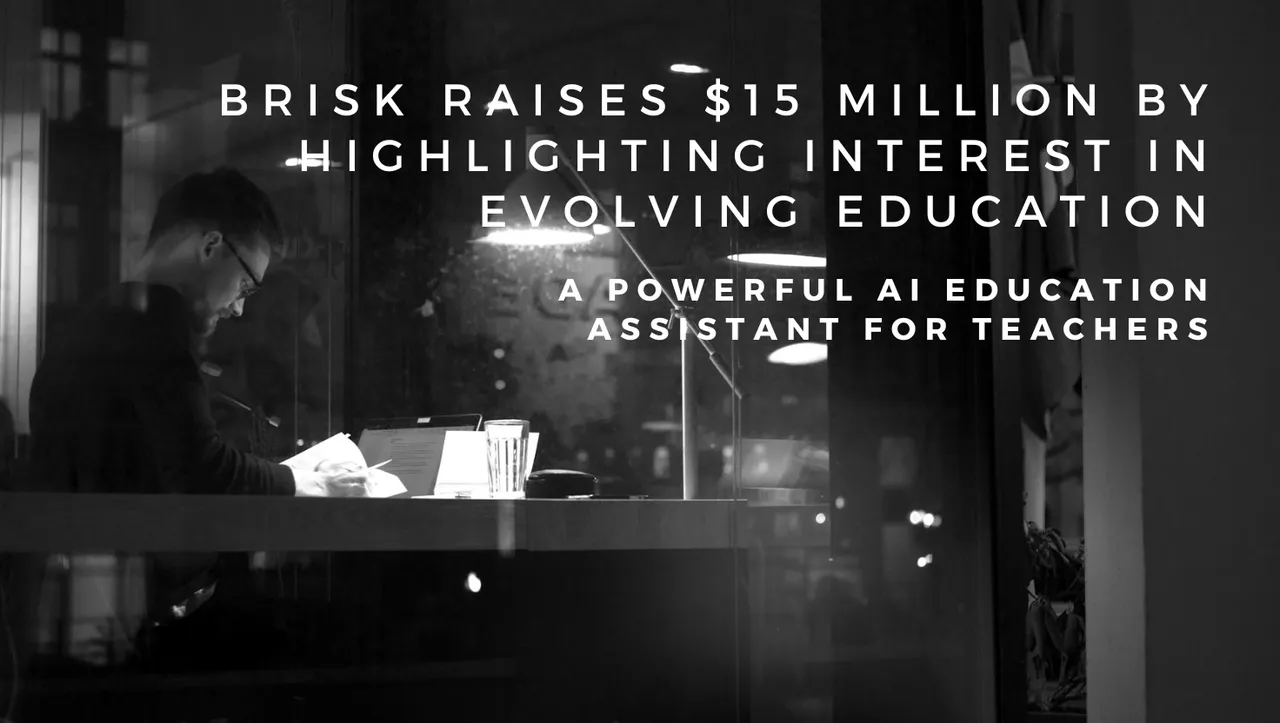
C D-X | Unsplash
Today, AI is impacting all sectors where it is possible to apply automation technology. One of the areas that many question is academia, for having changed drastically in recent times. But we must say it, this technology that calls us much attention came to stay, and possibly we will see it implemented in all kinds of scenarios, even directly in teaching students by degrees.
One aspect that was not discussed in depth was the use of artificial intelligence by teachers. Although this issue was briefly discussed after ChatGPT released a guide for teachers, which has not received some criticism regarding the distrust in the use of data and how the information is handled, which may not be entirely accurate. This suggests that educators still prefer to keep their distance in the use of this technology, and there are people who even think that a monopoly could be established in which AI fully penetrates the academic environment, so that there is no choice but to be part of this new system that is being developed.
It is clear that there is an ongoing process of renewal in the way we teach. In fact if we go back a few years, to the beginning of the pandemic that affected us all, we saw how new technologies were born, such as streaming platforms on which secondary or university education classes could be taught. AI adds an extra layer in the difficulty that teachers must advance with their profession, so there must be an adaptive effect that leads to counteract any kind of negative effect, such as plagiarism.
Technology has allowed greater access to information, and subsequently, AI could allow this speed in the resolution of problems that educators must be able to interpret to qualify its veracity, i.e., if the student has made an effort or not in the work that was requested. This raises an interesting scenario, where there are AIs that also check whether an AI has been part of someone else's resolution. The problem is perhaps the generation of false positives, causing a student to end up in a series of problems that should not have been caused.
It is clear that we need to make a change of focus in favor of adapting to a new technological era. For this reason, new technologies have arrived that focus on being a support for the long working hours of teachers. Let's put it this way as a substantial support in which revision hours are reduced to a few minutes.
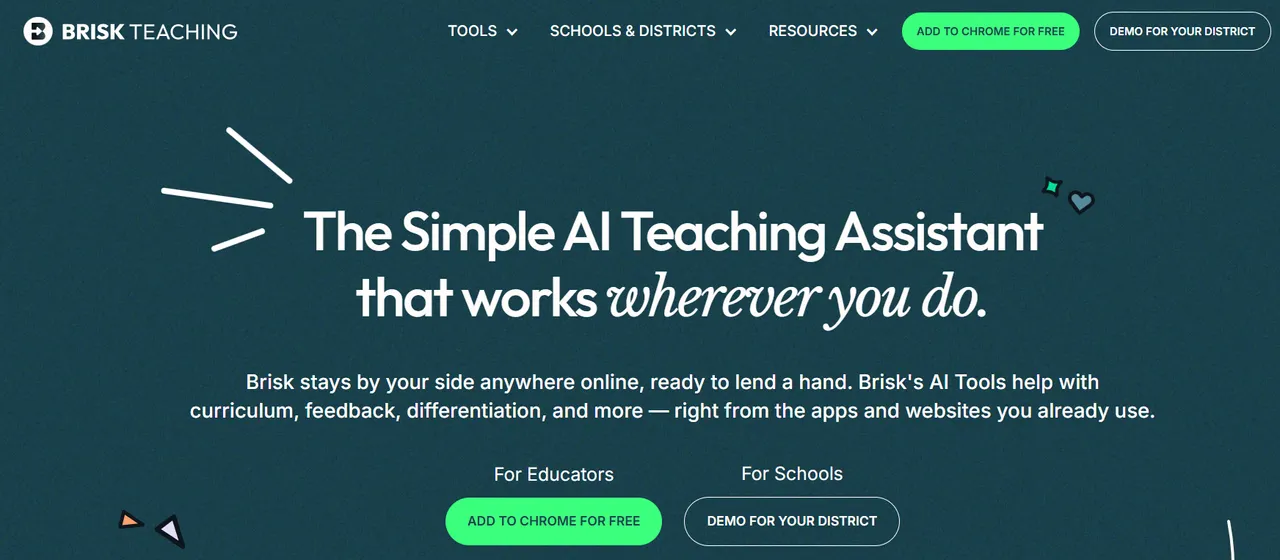
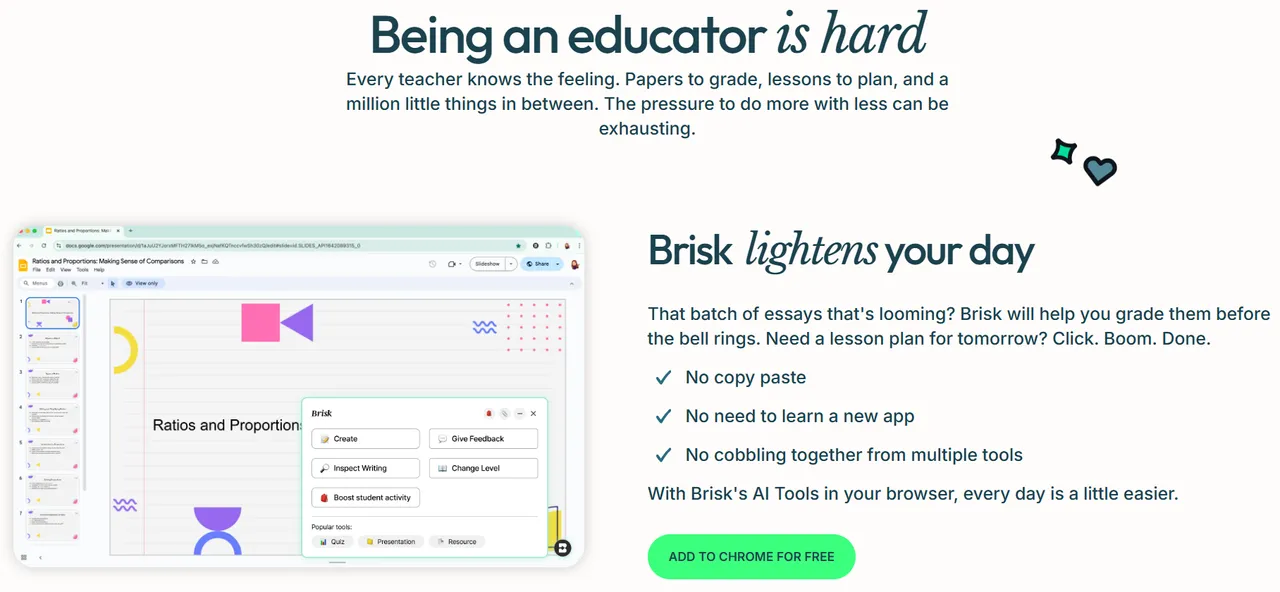
A startup has arrived in favor of educators under the name of Brisk. It is a generative AI platform focused on education, which has at its disposal a wide range of tools (about 40) that allow the teacher to drastically improve his performance when making corrections or planning a study route.
The streamlining of this way of working contemplates the writing of study plans, exams and presentations, but also takes into account the grading of what has been elaborated, through comments that add up to a better understanding of what important things should be taken into account. In terms of technology, first of all, generative AI is used, AI functions, and also the use of artificial vision, which is something that is evolving favorably, which is nothing more than the ability of AI to successfully interpret images and videos.
It is likely that over time we will see more platforms that include AI as an everyday use, with a focus on education. Technology has encompassed many of the sciences that are necessary to understand to advance in a career. Khan Academy was a creation that made a difference, and was oriented towards students and families, but we can also highlight the importance of Google and Microsoft, which have recently made great strides in this area, with the aim of bringing technology closer to schools and those who perform their functions. Kahoot has also been an important addition in the way of teaching, through gamification technology, in which it is entertaining to learn and advance in the different branches of education.
We consider that we have more or less a dimension of the way technology is advancing, and going back to Brisk's capabilities we can mention its characteristics, which are very peculiar.
In the first instance, the tool has the possibility to make a global reading of an essay and create comments according to the school level or with respect to your age. This function is called “Targeted Comments”, and facilitates the stressful task of reading, understanding and highlighting details to be improved, which I suspect also applies to exams, at least through online practical work.
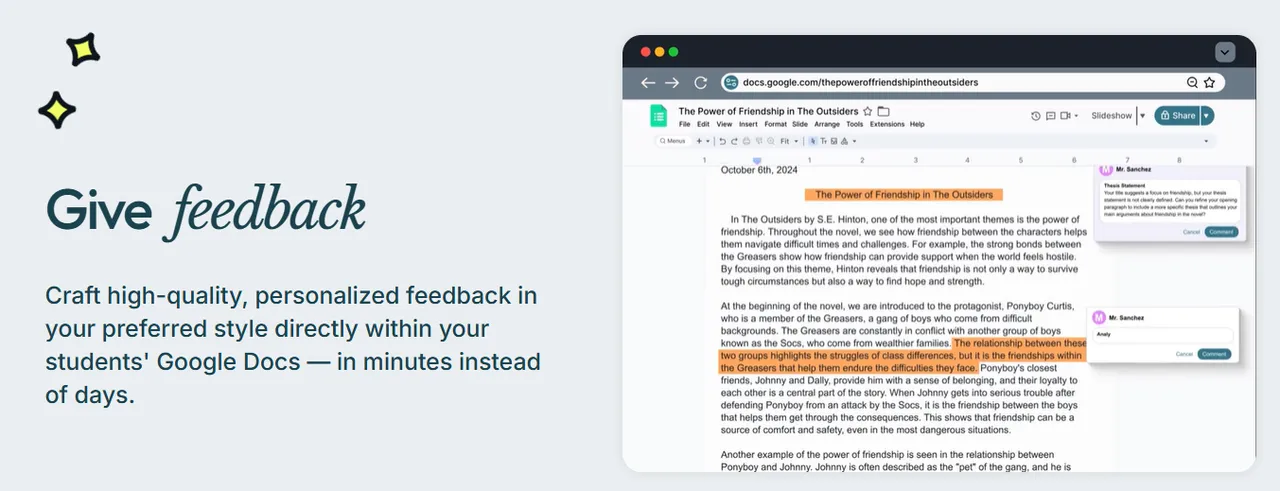
Secondly, the inspection of the work done by the students can be seen through a video view, so that the teacher can see how the tasks were organized and how the writing process flowed.
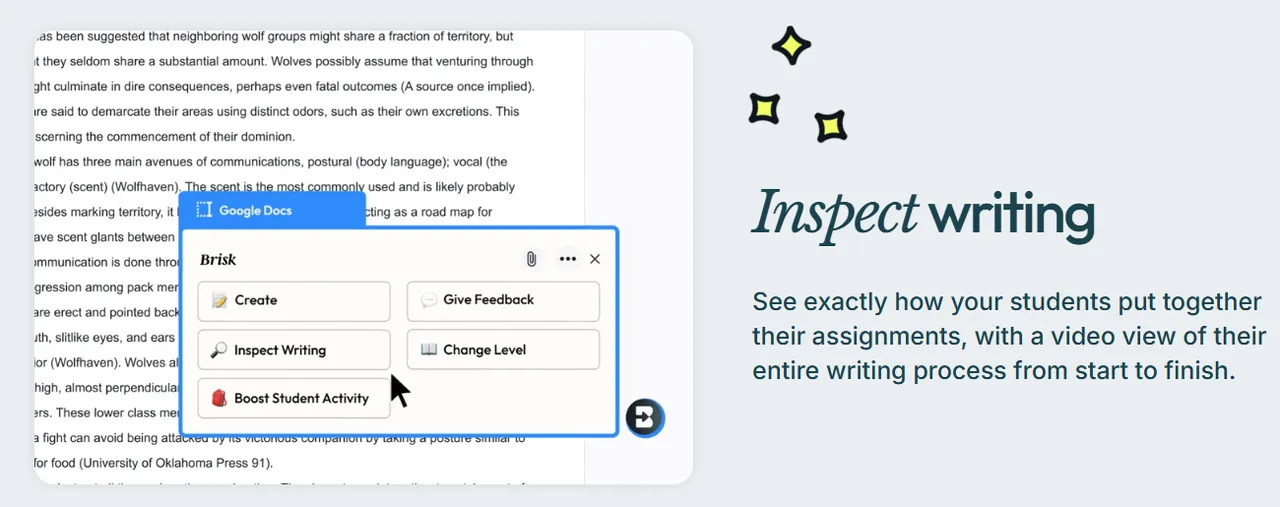
Finally, as a function to highlight, and of course there are many more, the creation of a study plan is something that generative AI can be perfectly applied. Teachers are often burdened with a lot of work, and if we are in the academic field, surely there is a professor who exerts some pressure on the delivery of teaching material, which in this case, could be a solution to impart. Among this study plan we must also contemplate the inclusion of reading material or resources, which the AI can easily generate with the help of a system created for that purpose.

San Francisco-based Brisk has raised $15 million in funding to improve and add features to its platform, but also to integrate with other popular platforms, including direct targets such as Microsoft. This funding round is led by Bessemer Ventures Partners, in partnership with previous firms such as Owl Ventures, South Park Commons and Springbank Collective. A $5 million seed round was raised in September 2024, demonstrating the interest in this great technology that seems to want to take hold and intertwine itself into education.

- Main image edited in Canva.
- Complementary images obtained at briskteaching.com.
- Information has been consulted from: techcrunch.com.
- Translated from spanish with DeepL.